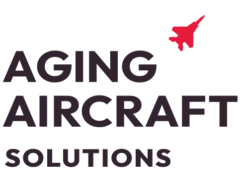
Product reliability is essential for all complex products, but especially in the aerospace industry. The aerospace industry is growing with products including industrial or consumer drones and Unmanned Aerial Vehicles (UAVs). Taking short cuts in reliability engineering during product development can have expensive consequences, not to mention safety implications.
GoPro recently released their latest Karma drone to pair with their GoPro Hero5. It looks like a fantastic and competitive product in the increasingly crowded consumer drone market dominated by DJI. Within a month of its release, the company was forced to issue a recall of Karma due to a power failure issue which was causing some units to fall out of the sky.
The Verge wrote a great article on why the Karma drone had issues. Lets breakdown the cost of this recall. GoPro sold over 2,500 Karma units at a price of $800 each. That’s approximately $2,000,000 of revenue (not really because GoPro sold some of the units through retailers like Best Buy at wholesale prices, but for the sake of this analysis, lets keep it simple). If GoPro has a 30% gross profit margin on these units, that equates to $1,400,000 cost of goods sold and $600,000 of lost profits. GoPro is also paying for shipping back on all returned units. Assuming 75% of customers return the product and a return shipping cost of $10 results in an additional $25,000 loss. These are only the direct costs, and do not include the damage to GoPro’s reputation for reliable products in general, and the reliability of their first consumer drone product specifically.
From a reliability engineering standpoint, where could GoPro have avoided this expensive and embarrassing outcome?
The product failure modes effects and criticality analysis (FMECA) should have identified all the potential failure modes for the product and what the impact of those failure modes would be on UAV reliability. This is standard reliability analysis in the aerospace industry. The FMECA should have identified the failure mode that ultimately caused the recall, namely the battery was becoming dislodged or out of alignment causing the electrical power connections to the rest of the product to disconnect. This should have been identified as a highly critical failure mode, because it would cause the entire product to lose power in flight and fall from the sky. In order to mitigate this highly critical failure mode, a product testing program should have been designed to determine how likely this failure mode was likely to occur, and if that failure probability was too high, to implement design changes to bring the failure probability down to acceptable levels. GoPro may have done all of this, we don’t know, but somewhere an error was made or testing was insufficient.
What is GoPro likely doing now to rectify this problem and increase their drone/UAV reliability?
They are likely revisiting their product FMECA and ensuring they have identified all the failure modes, their effects, and criticality. Then, they will likely be designing a testing program to rigorously test all highly critical failure modes. Finally, they will then likely make design improvements to address any reliability issues they may have.
If you would like to improve your UAV reliability, or the reliability of any aerospace product, please contact us and we will be happy to bring our reliability engineering expertise to ensure your product is safe and reliable.
